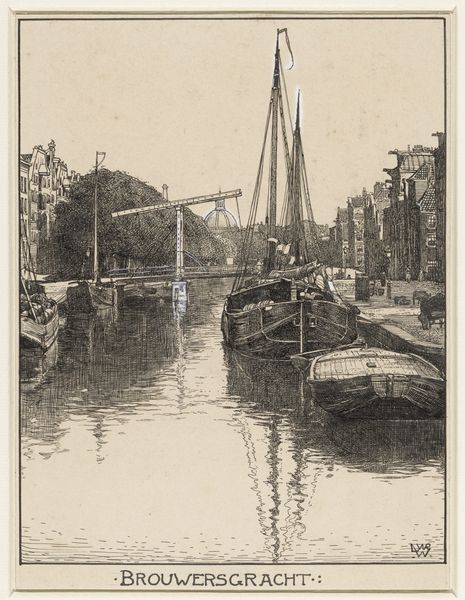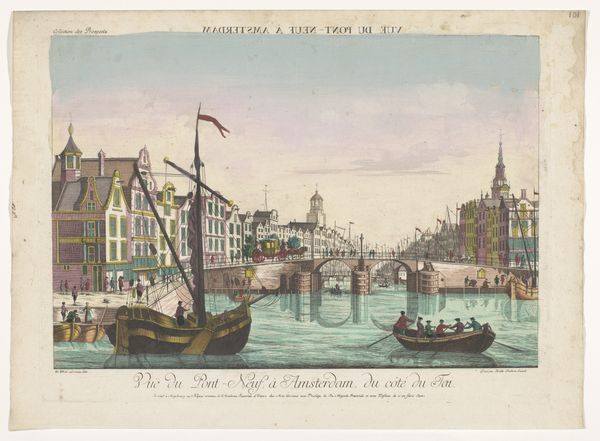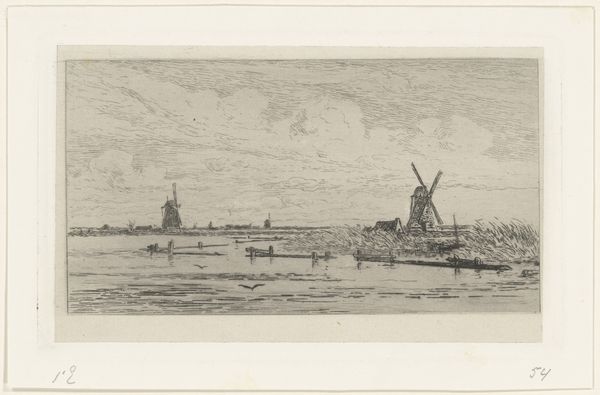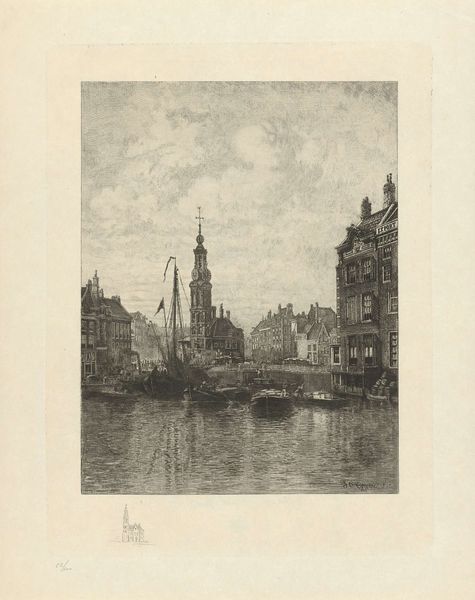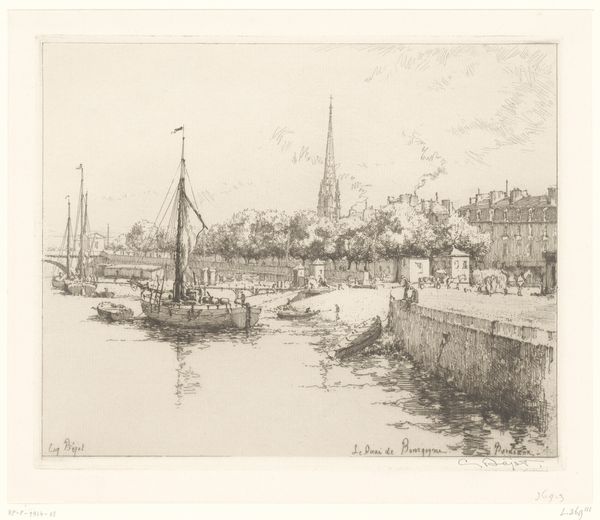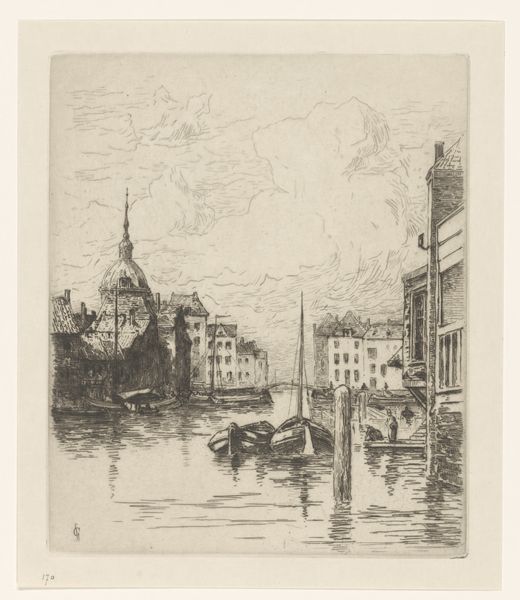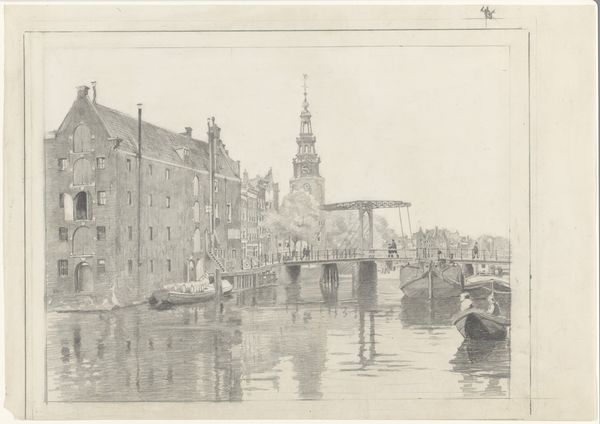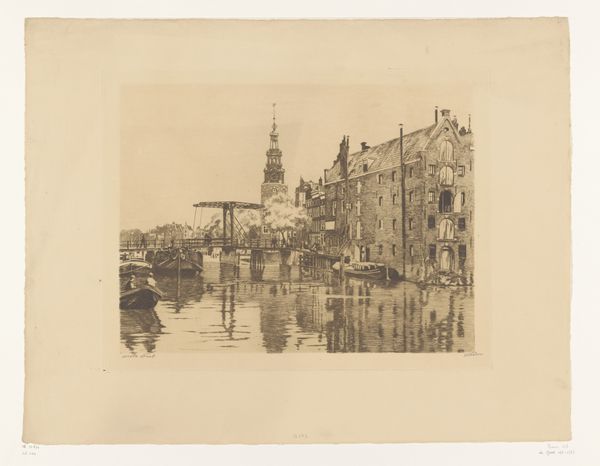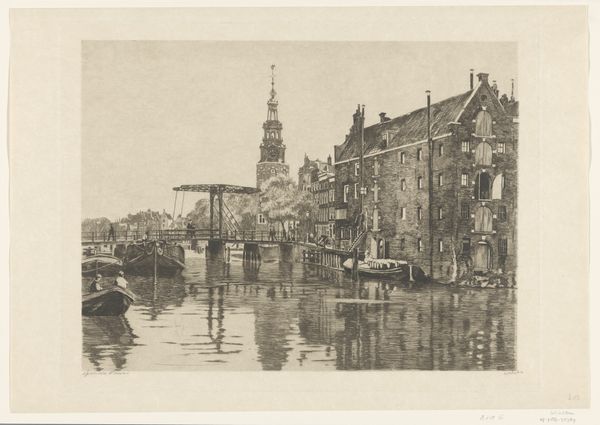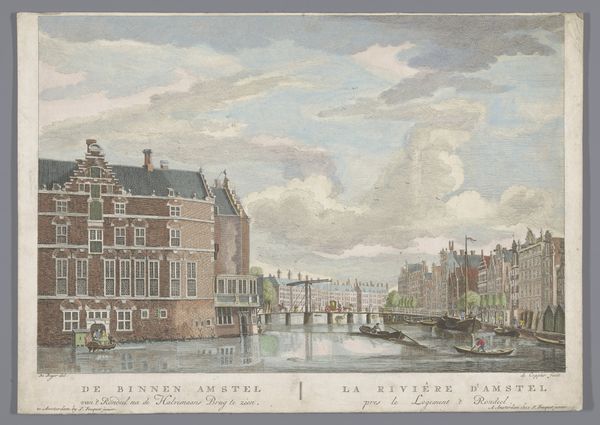
print, etching
#
dutch-golden-age
# print
#
etching
#
landscape
#
19th century
#
cityscape
Dimensions: height 161 mm, width 197 mm
Copyright: Rijks Museum: Open Domain
Editor: So, this etching is titled "De Nieuwe Vaart te Amsterdam" by Willem Wenckebach, dating roughly from 1870 to 1926. It's incredibly detailed. I’m struck by how it balances this bustling harbor scene with a quiet stillness in the water. What do you make of it? Curator: Well, considering the period, I see a depiction of Amsterdam at a critical point in its industrial evolution. Note how Wenckebach juxtaposes the traditional Dutch Golden Age imagery of sailing ships with the emerging industrial structures along the waterfront – the factories and perhaps even a glimpse of a windmill in the distance. Editor: Yes, I noticed that too! The composition seems to purposefully contrast those elements. Was Wenckebach making a specific comment, do you think? Curator: I think so. Remember that during this time, there was much debate about the societal costs of industrial progress. By placing these symbols side-by-side, Wenckebach prompts us to consider the changing face of Amsterdam, its evolving identity, and even its relationship with its own history. It begs the question: is progress always progress for everyone? Editor: That’s fascinating. I hadn't thought about it that way, seeing the cityscape as a social commentary more than just a visual representation. Curator: Exactly. Art serves as a powerful public record of societal anxieties and aspirations. What new questions does this context bring up for you? Editor: It makes me wonder how residents felt witnessing the changing skyline – were they optimistic or apprehensive about the future? Thank you. Curator: Indeed, a single artwork can speak volumes about its era. I’ve appreciated your fresh perspective today!
Comments
No comments
Be the first to comment and join the conversation on the ultimate creative platform.

